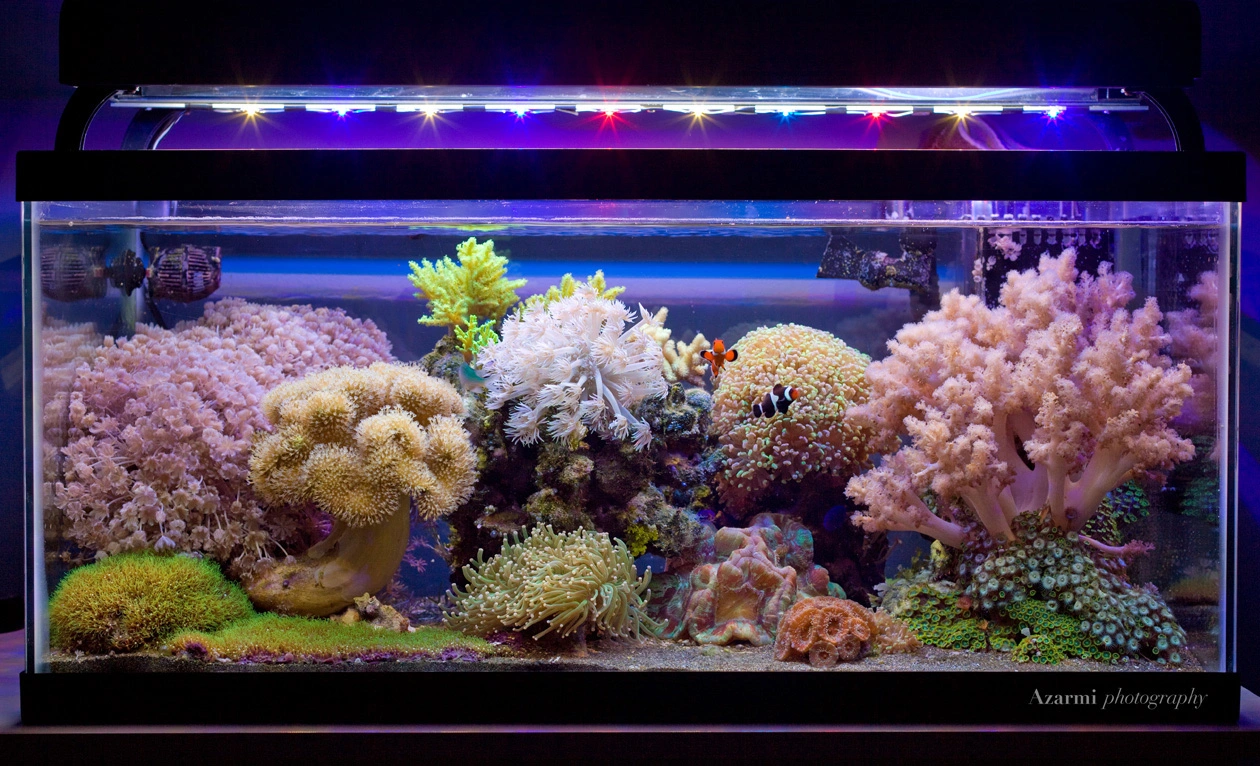Stunning 40-Gallon Reef Tank – razarmi's TOTM | NanoReef

Tank Specifications
Volume: 40 Gallons / 151 Liters
Dimensions (L × W × H):
36.0" ×
18.0" ×
16.0"
91.4cm ×
45.7cm ×
40.6cm
Equipment List
- Salt: Tropic Marin
Frequently Asked Questions
What are the benefits of using a Life Reef Nano overflow box?
The Life Reef Nano overflow box offers 100% reliability with no siphon restart issues, ensuring that water flows smoothly from the tank to the sump. This design helps maintain stable water conditions, which is crucial for the health of reef inhabitants.
How can I maintain an effective sump with low maintenance requirements?
A simple sump design that includes a large clump of Chaetomorpha algae can effectively filter water naturally while requiring less maintenance. Additionally, avoid using filter socks to encourage beneficial detritivore populations such as brittle stars and amphipods that help clean particulates.
What should I use for filtration instead of a protein skimmer?
Instead of a protein skimmer, you can use a Phosban reactor filled with Granular Activated Carbon (GAC). GAC helps remove dissolved organics, keeps the water clear, and minimizes odors while avoiding the maintenance issues that come with protein skimmers.
What lighting setup works best for soft and LPS corals?
A combination of T5 fluorescent lights with high-quality bulbs like ATI Blue Plus and GE6500, along with supplemental LEDs (Cree XP-G, XT-E, and Osram), provides adequate light intensity and spectrum for soft and LPS corals. The added shimmer and color enhance the overall aesthetics of the tank.
How can DIY lighting modifications improve my reef tank?
Creating a custom lighting setup by retrofitting existing fixtures can significantly enhance light output and efficiency. In this case, replacing the stock bulb with brighter options and adding additional LED lights provided better growth and color for the corals.
How should I feed my corals and fish?
Feed fish a mix of high-quality flake foods and frozen options like PE Mysis and Cyclop-Eeze two to three times a day. Corals benefit from target feeding with the same frozen foods two to three times a week, while the main sump pump can be turned off during feeding to improve food distribution.
What dosing routine is effective for maintaining water chemistry?
Use a two-part dosing system like Brightwell Aquatics, dosing 200 ml weekly. The alkalinity component can be added to top-off water for a slow drip, and calcium should be dosed manually twice a week, along with weekly iron and iodine supplements to ensure optimal coral health.
What is an effective maintenance routine for my reef tank?
A simple maintenance routine includes daily inspections of all equipment, corals, and fish. Perform 10% water changes weekly using a reliable salt mix, clean the glass as needed, and inspect/clean pumps and equipment regularly. Make sure to change GAC monthly and test alkalinity and calcium monthly.
How can I manage algae growth without overdoing phosphate removal?
Be cautious when using GFO as it can quickly lower phosphate levels, which may harm corals if dropped too low. It's crucial to maintain balanced nutrient levels to prevent starvation of corals while managing algae growth.